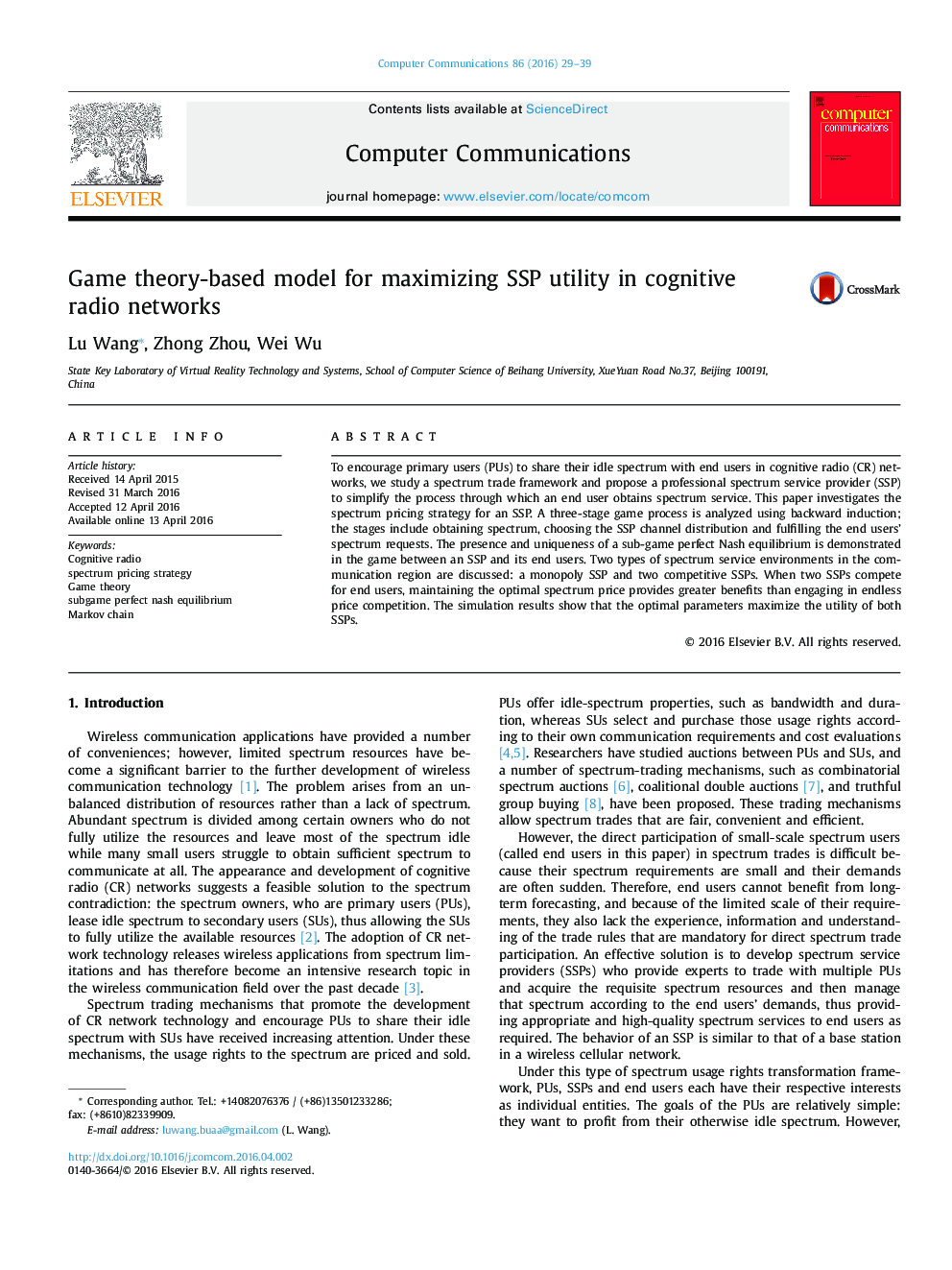| Article ID | Journal | Published Year | Pages | File Type |
|---|---|---|---|---|
| 447504 | Computer Communications | 2016 | 11 Pages |
To encourage primary users (PUs) to share their idle spectrum with end users in cognitive radio (CR) networks, we study a spectrum trade framework and propose a professional spectrum service provider (SSP) to simplify the process through which an end user obtains spectrum service. This paper investigates the spectrum pricing strategy for an SSP. A three-stage game process is analyzed using backward induction; the stages include obtaining spectrum, choosing the SSP channel distribution and fulfilling the end users’ spectrum requests. The presence and uniqueness of a sub-game perfect Nash equilibrium is demonstrated in the game between an SSP and its end users. Two types of spectrum service environments in the communication region are discussed: a monopoly SSP and two competitive SSPs. When two SSPs compete for end users, maintaining the optimal spectrum price provides greater benefits than engaging in endless price competition. The simulation results show that the optimal parameters maximize the utility of both SSPs.
